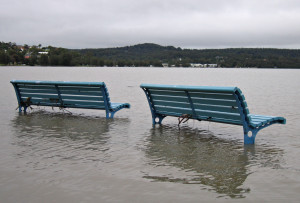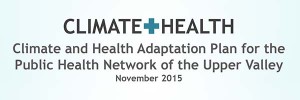Addressing the Health Impacts of a Changing Climate
 For many in Northern New England, the facts of climate change become reality during these winter months. We notice our ski areas opening later, winter tourism decreasing, and the sap running sooner. There’s grey-green grass outside our windows where we’d hope to see sparkling white this time of the year. While this unseasonably warm winter is just a single point of data in the upward trend of global temperature, it serves as a sobering prelude for what we can expect in the future. With the levels of greenhouse gases currently in our atmosphere, we’ve already bought decades worth of climate change.
For many in Northern New England, the facts of climate change become reality during these winter months. We notice our ski areas opening later, winter tourism decreasing, and the sap running sooner. There’s grey-green grass outside our windows where we’d hope to see sparkling white this time of the year. While this unseasonably warm winter is just a single point of data in the upward trend of global temperature, it serves as a sobering prelude for what we can expect in the future. With the levels of greenhouse gases currently in our atmosphere, we’ve already bought decades worth of climate change.
The argument that our climate is not changing has become rare one, with over 200 nations committing to action and 99.9% of climate scientists agreeing that warming trends are caused by human activity. Here in the Upper Valley, we already have good data to show that temperatures, precipitation and storm events are all increasing, and that revenues from winter industries have fallen. At this point, the question is no longer if the climate is changing, but what to do about it.
There are two main approaches to addressing climate change – mitigation and adaptation – and we believe that successful efforts to better our future must incorporate both strategies. Simply stated, climate change mitigation includes actions that slow the rate of climate change. Because we know that greenhouse gases, like carbon dioxide, in our atmosphere are primary causes of global warming, solutions that reduce emissions are mitigation strategies. These tactics include improving our energy efficiency, insulating our homes and commercial buildings, buying fuel efficient vehicles and carpooling as well as leveraging clean and renewable forms of energy like wind, solar, and hydro power. Climate change adaptation strategies focus on coping with the impacts that we are already experiencing, and those that are projected to increase in the future. These efforts include everything from emergency preparedness plans for increases in extreme heat, precipitation and storm events, to changes in the ways we construct homes, businesses and roads. Adaptation also means diversifying the tourism industry to rely less on snow and cold, changing agricultural practices to reflect shifts in the growing season, and preparing our health systems for increases in heat related and vector borne diseases.
The health impacts of climate chang e are no small piece of the puzzle – and the Public Health Council of the Upper Valley is dedicated to finding ways to adapt to these effects and mitigate future ones. “We recently completed a preliminary assessment and plan to look at how climate change may affect health in the Upper Valley, with the help of the Upper Valley Lake Sunapee Regional Planning Commission and our UVAW partners. Though our area has seen worrisome changes on several climate related public health related indicators, such as an increase in the incidence of Lyme disease and a longer allergy season, we are most concerned about the rising number of hot days,” says Alice Ely, PHC Coordinator. Extreme heat events are calculated using three metrics: number of days over 90°F, number of days over 95°F, and average temperature on the hottest day of the year. Already we have begun to see increases in these numbers from the historical data (1980-2009), and by the middle of this century, northern New Hampshire is expected to experience a 2 to 4 fold increase in the number days over 90°F, a 3 to 7 fold increase in days over 95°F, and a 4 to 10 fold increase in the average temperature on the hottest day of the year.
e are no small piece of the puzzle – and the Public Health Council of the Upper Valley is dedicated to finding ways to adapt to these effects and mitigate future ones. “We recently completed a preliminary assessment and plan to look at how climate change may affect health in the Upper Valley, with the help of the Upper Valley Lake Sunapee Regional Planning Commission and our UVAW partners. Though our area has seen worrisome changes on several climate related public health related indicators, such as an increase in the incidence of Lyme disease and a longer allergy season, we are most concerned about the rising number of hot days,” says Alice Ely, PHC Coordinator. Extreme heat events are calculated using three metrics: number of days over 90°F, number of days over 95°F, and average temperature on the hottest day of the year. Already we have begun to see increases in these numbers from the historical data (1980-2009), and by the middle of this century, northern New Hampshire is expected to experience a 2 to 4 fold increase in the number days over 90°F, a 3 to 7 fold increase in days over 95°F, and a 4 to 10 fold increase in the average temperature on the hottest day of the year.
It may seem strange to be worrying about extreme heat in our area – after all, we’re known for our snow and ice storms, not for sweltering summers. But one of the reasons the projected rise in the number of hot days is so alarming is that, by and large, New Englanders are not prepared to deal with extreme heat events or stretches of hot weather. Few homes have air conditioning units, and they are especially rare in lower income communities. While social services can draw on many resources to provide fuel and heating solutions in winter months, we have far fewer strategies for addressing cooling needs. As with winter storms, extremely hot days and stretches of heat are especially hazardous for vulnerable populations such as older adults, the disabled, people with existing health conditions, and low income groups.
In response to the concerns about the health related consequences of climate change in our area, the Public Health Council of the Upper Valley is partnering with the Upper Valley Adaptation Workgroup (UVAW) to host a community forum on this topic. At this Climate Change Impacts to Health event, we will be sharing information about how the climate is changing in the Upper Valley, what Vermont and New Hampshire are doing to adapt to changes in our climate, and how community leaders can work together to reduce the health impacts from a changing climate The PHC and UVAW will be introducing an upcoming project to address the impacts of extreme heat on older adult populations, and will be looking for feedback and partnerships for this work. The Public Health Council and our partners in the Upper Valley Adaptation Workgroup are looking forward to seeing you at this important discussion. Alex Jaccaci, Co-Chair of UVAW believes that “it will require leadership, creativity, problem solving, teamwork and drawing from our commitment to our communities and neighbors to get ahead of these challenges. But this is what we will do – turn these challenges into opportunities to be stronger and more resilient as communities and as a region.” We couldn’t agree more.
To RSVP for the Climate Change Impacts to Health Forum, visit: http://tinyurl.com/UV-CLIMATE-HEALTH, and learn more about the development of an Upper Valley climate and health plan at https://uvpublichealth.org/climate-and-health/.




Leave a Reply
Want to join the discussion?Feel free to contribute!